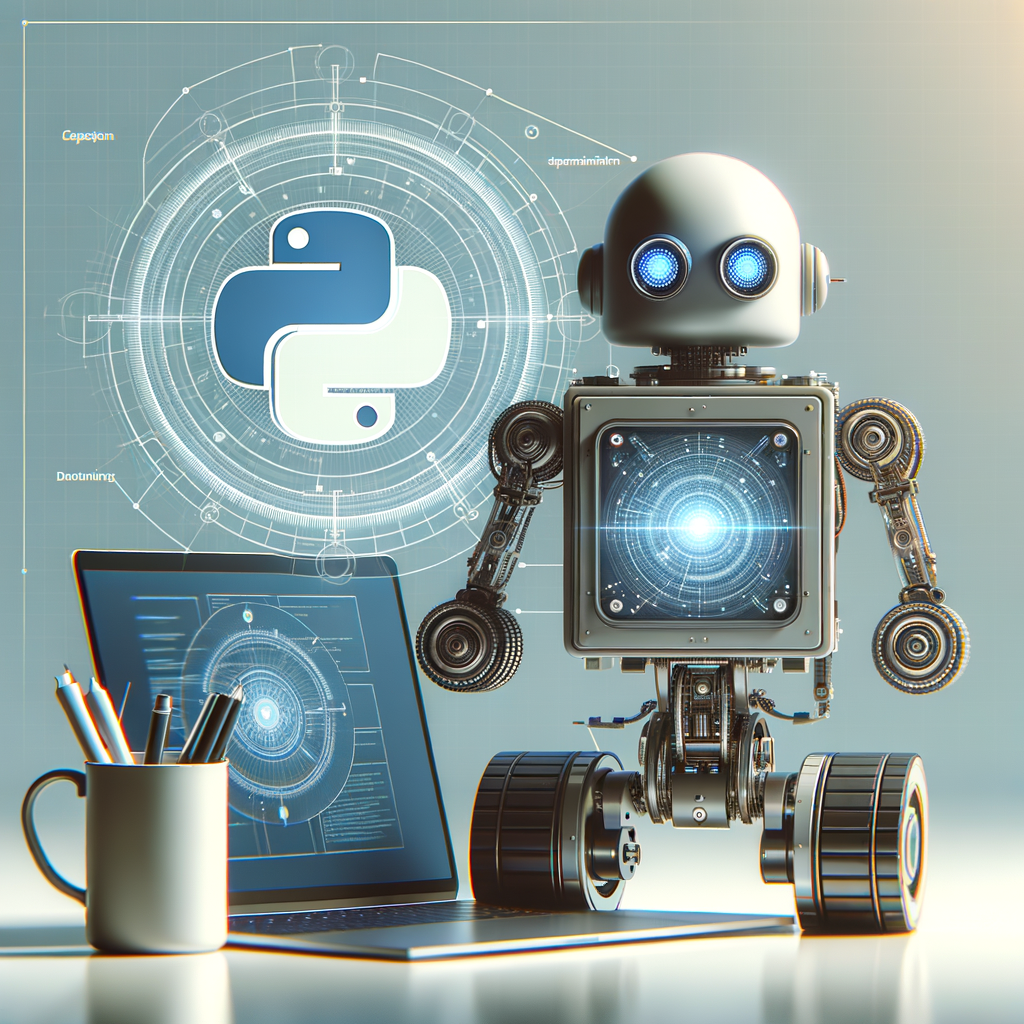
Beyond Automation: The Future of Python in AI-Driven Robotics
Delve into the pivotal role Python plays in the evolution of AI-driven robotics. This blog explores the fusion of Python programming and robotics, highlighting how they collectively drive innovation and efficiencies in automation. Discover emerging technologies, applications, and the potential future impact on industries such as manufacturing, healthcare, and more. From simplifying complex robotic tasks to enhancing machine learning capabilities, uncover how Python is at the heart of this transformation.
Introduction
The evolution of robotics has been markedly driven by advances in artificial intelligence (AI) and programming languages that facilitate problem-solving and automation. Python, with its simplicity and readability, has emerged as the go-to language for AI and robotics development. In this blog, we explore the synergistic relationship between Python and AI-driven robotics, and how they are shaping the future of industries ranging from manufacturing to healthcare.
Why Python?
Python stands out as a leading choice for robotics for several reasons:
- Intuitive Syntax: Python’s clear and straightforward syntax allows developers to script and automate without unnecessary complexity.
- Extensive Libraries: Libraries such as NumPy, SciPy, and specific robotics libraries like ROSPy (Robot Operating System) offer robust tools for robotic analysis and development.
- Community and Support: Python boasts an expansive community, providing substantial online resources, documentation, and support.
Python and Robotics Systems Integration
In robotics, Python acts as a bridge, facilitating communication across diverse robotic systems. Its extensive libraries help command robot operating systems efficiently, control hardware through scripts, and design algorithms for real-time decision-making.
Enhancing Machine Learning in Robotics
Machine Learning with Python
AI-driven robotics heavily relies on machine learning (ML) for developing smart capabilities. Python's ML libraries such as TensorFlow and PyTorch offer powerful frameworks for developing sophisticated models. With these tools, robots can:
- Recognize patterns in complex datasets.
- Adapt to new data inputs.
- Automate tasks in dynamic environments.
Implementing Vision and Speech
Python enables robots to perceive their environment through machine vision and speech recognition. OpenCV and PyTorch empower robots to perform feature detection, image classification, and voice command responses, enhancing interactivity and understanding.
Applications Across Industries
Manufacturing and Automation
In manufacturing, Python-powered robots optimize processes, increase precision, and reduce human labor dependency, leading to more efficient and cost-effective production lines. They can adapt to tasks ranging from assembly to quality inspection, powered by AI algorithms that improve over time.
Healthcare
In healthcare, robotics is revolutionizing patient care and surgical precision. Python enables the development of robotic assistants that can diagnose, assist in surgeries, or even engage multi-tasking in patient management.
Future Trends and Innovations
- Collaborative Robots (Cobots): Python is instrumental in developing highly interactive robots that collaborate with humans without barriers, improving safety and efficiency in the workplace.
- Cloud Robotics: As cloud computing evolves, Python enables seamless integration with robots, allowing the sharing of datasets and computational tasks across a distributed network.
- Edge Computing: Python facilitates real-time data processing right at the edge of the network, providing faster response times crucial for autonomous robots.
Conclusion
Python's versatility and ease of integration with AI technologies make it a cornerstone of modern robotics. As the field of robotics pushes the boundaries of innovation, Python will continue to empower developers to create more intuitive, autonomous, and efficient robots that transform various industries. The future is bright for Python in AI-driven robotics, promising more advancements and practical solutions that meet the demands of tomorrow.